Castors versus Glides
(added 26_4_12)
The Issue
Within SLS in recent years, a couple of accidents have been caused by a lab chair rolling out from under someone when they attempted to sit on the seat. Although rare, such accidents can result in painful, and possibly serious, injury. Having glides fitted to the base of a chair, as opposed to castors, prevents such an accident occurring. However, glides are not popular amongst SLS lab staff and come with their own disadvantages.
The History
When MSI and WTB were first equipped, lab chairs were fitted with castors as standard. However, prior to the furnishing of JBC, manufacturers were prohibited from supplying lab chairs fitted with castors on H&S grounds and glides became the standard. A rather heated 'castors versus glides' debate began when the majority of lab workers moving into the newly opened JBC building complained about glides on their lab chairs and asked that they be replaced with castors. An initial risk assessment was carried out by SLS H&S in 2006 in response to this and it came out in favour of castors. However, two castor related accidents then occurred, one in Feb 2009 and one in June 2010, prompting a review of the risk assessment (see addendum on page 3) and much discussion between senior managers and H&S personnel as to whether all lab chairs should be fitted with glides.
The Outcome
In June/July 2010 a survey was conducted amongst SLS lab workers to get the opinion of the end users. 92% of those who responded came out in favour of castors for a variety of valid reasons. The 8% who preferred glides also had their own valid reasons. In light of this, the SLS H&S Management Committee decided to allow each lab worker to make an informed choice between castors or glides. The Committee also asked SLS H&S to provide guidance on how to reduce the risk of injury when getting on and off a lab chair. This guidance follows.
What are the risks? When attempting to sit on a chair fitted with castors there is a chance that it could roll out from under you, especially if the seat is positioned too high and/or you are holding something in your hands. It is likely that you will land rather heavily on your bottom and, if there's furniture or equipment directly behind you, hit the back of your head on the way down. This will most likely result in painful bruising but, in the worst case scenario, you could break bones and/or suffer concussion. |
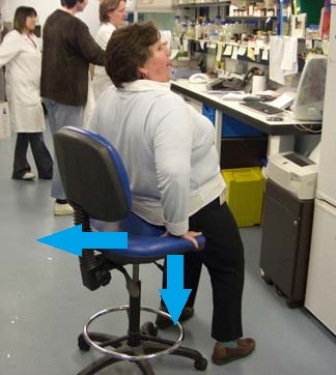 |
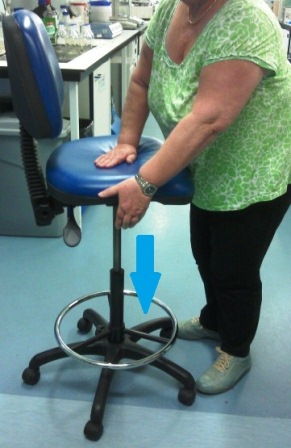 |
What can I do to minimise the risks? If the seat height is set too high for you, try to fully lower it by lifting and holding the seat height adjustment lever, usually located under the seat on the right hand side, while pushing very firmly down onto the seat. Unfortunately, more down force, i.e. full body weight, is usually required so this will not work on all lab chairs. |
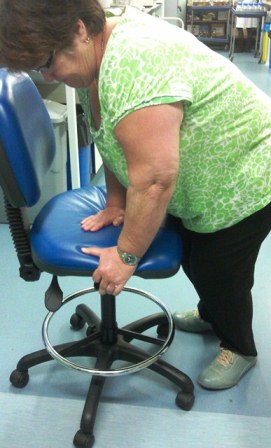 |
|
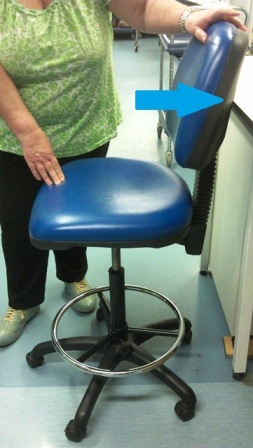 |
Stabilise the chair, if at all possible, by positioning the back against a wall, fixed bench or other immovable, robust object. This will stop it rolling backwards. |
| Do not attempt to sit while holding objects in your hands. In the event of a fall you will probably drop/spill whatever you are holding. Keep your hands free to grip the chair as you get onto it. | 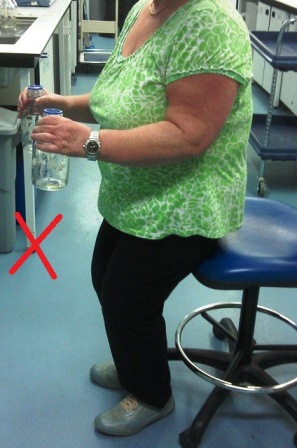 |
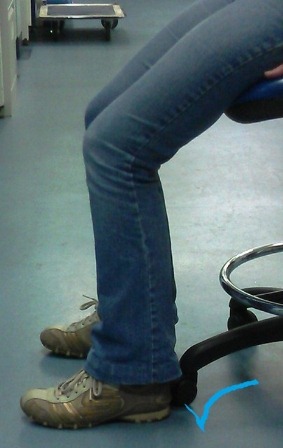 |
Ideally, both feet should be firmly planted on the floor when you get onto a chair and when you get off it. Unfortunately, this is not always possible but you should still lower the seat fully before getting off, just to make getting back onto the chair a little bit easier and safer. |
| Note: you are entitled to ask for a chair fitted with glides rather than castors, if you prefer. However, chairs fitted with glides have also raised H&S concerns and these are covered in the risk assessment. | 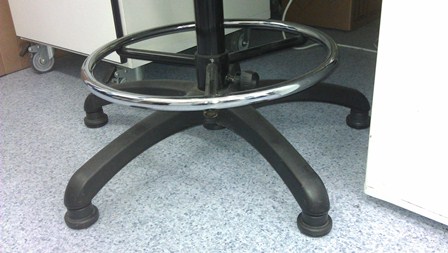 |



